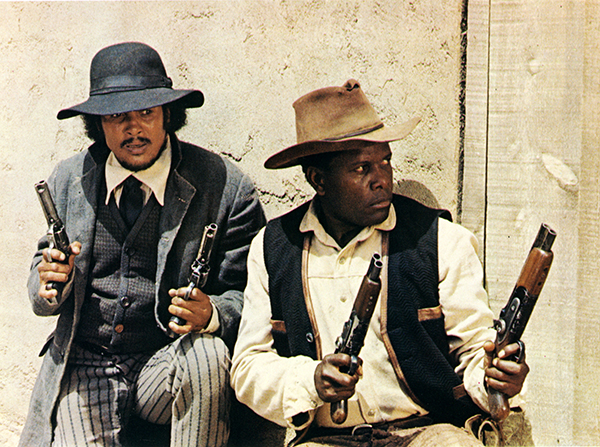A convergence of struggles
Caravan of the free
PostED ON 20.10.2022
An entertaining and political Western, Buck and the Preacher, the first movie by actor Sidney Poitier, tells the story of the little-known fate of black Americans seeking to leave the South after the Civil War.
The picture begins with the shrill sounds of a wild harmonica, and as is often the case in films made in the 1970s for black audiences (known as Blaxploitation), the OST is top-notch. It features jazz saxophonist Benny Carter and a number of other talented musicians, including harmonica player Sonny Terry. It takes this western, which is both classic in its storytelling and modern in its subject matter, to a breakneck pace. ‘Buck and the Preacher’ draws on the little-known history of the post-Civil War era: recently freed slaves who were promised ‘40 acres and a mule’ (rarely received) leave the Southern states to find new land in the West. At the end of a perilous journey, it is a euphemism to say that they were not welcomed well: the local cowboys hunted them down, killed those who resisted them and dismantled the convoys.
It was Harry Belafonte who had acquired the rights to a story about a black convoy driver, in charge of guiding the caravans on their long journey, and a phony preacher who would soon join the migrants' cause. After his debuts in the cinema, Belafonte put all his energy into his musical career. For him, the only star who could make the film a reality was Sidney Poitier, the sole black actor to win an Oscar. The two men were on bad terms: Belafonte had been very close to Martin Luther King and a disagreement arose between him and Poitier after the assassination of the leader. But two years after the falling out, Poitier received a surprise phone call from his former friend, who offered to co-produce the film and co-star in it.
Sidney Poitier accepts, backed up with a contract with Columbia that allows him to choose his subjects. A director, Joseph Sargent, is hired and filming begins in Mexico. And then very quickly, things go wrong. Sargent's direction seems lacklustre and unconvincing to the two main actors. In particular, it seems unsuited to the political content of the film, of which they have gradually become aware, and which is also made clear by the presence in the credits of the activist and poet Ruby Dee, in the role of Poitier's girlfriend. Poitier attempts and succeeds in a coup de force to take over directing on his own account, after having settled Sargent's departure amicably. He does so without the knowledge of Columbia, which, swayed by the rushes, finally give him the green light.

Buck et son complice, 1972 © DR
Poitier explained: "Harry and I wanted blacks and minorities in general to find some substance in ‘Buck and the Preacher’, something to stimulate them intellectually. In history books, written mostly by whites, our history was often portrayed in a dishonest, unpleasant or inhumane way. We wanted the movie to say to the audience: look, this is who we were, people with courage, energy, conviction. Joseph Sargent was taking the film to the side of a classic, well-made entertainment vehicle, a typical American western. Our movie had to be more. The relationship between the Indians and the blacks had never been explored in cinema, it had to be explored in our film. »
In fact, without ever losing its earthiness and energy, the film tackles a new theme: the convergence of struggles between discriminated peoples. Don't the Indian tribes and the black migrants have one and the same enemy: white supremacy and its vile inhumanity? Beyond this eminently political subject, the film is captivating thanks to the close involvement of the actors - in particular Belafonte's colourful performance - which often makes this atypical western to be rediscovered so compelling.
A. F.
Screenings:
Buck et son complice by Sidney Poitier (1972, 1h42)
Lumière Terreaux Thu. 20 10pm | Pathé Bellecour Sat. 22 2:15pm

